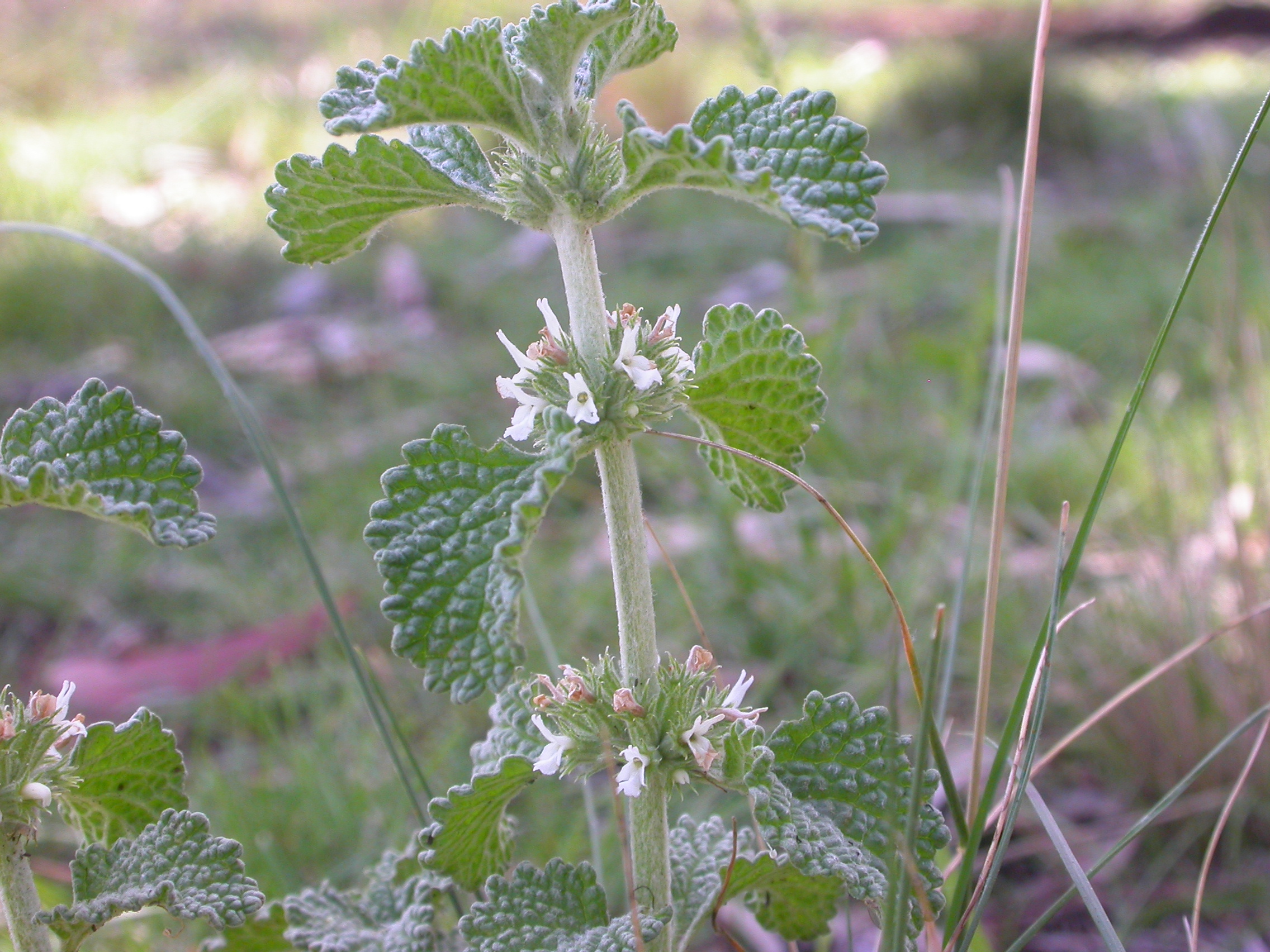
Horehound, Marrubium vulgare, with burrs (W.Pix).
Friends of Mount Majura (FoMM) are certainly not hibernating during winter.
Please join us for a massacre to tackle horehound in the paddock north of the Hackett water tank. Give as much or as little time as you want and be amazed at what you can achieve.
When: Sunday 18 July, 1- 4 pm
Where: Majura paddock north of the Hackett reservoir off Rivett / French Streets; click on this map to view the registration point and working area.
What: Pulling and digging out horehound.
Bring and wear: Appropriate clothing for the weather, garden gloves if you have them.
From 2004 to 2012 volunteers hand-weeded a large number of weeds, and direct-seeded and planted a range of native grasses, shrubs and wildflowers in and around the paddock behind (north of) the Hackett water reservoir to assist the restoration of grassy woodland and to provide habitat for local wildlife; read more here. The main weed species were Paterson’s Curse in the tree-cleared area in the northern part of the paddock and Horehound in the southern timbered part; click here to read a short horehound story and see how the paddock looked before FoMM began work.
Following drought, overgrazing of the native ground cover and above average rain during the current (2020/21) La Nina event, weeds, including large amounts of horehound have germinated from the present seed bank in the soil.
We hope that the continuous removal of horehound will deplete the soil seed bank over time and benefit native plants. Furthermore, we plan to direct-seed native grass which will help to suppress horehound and other herbaceous weeds.

Horehound can be easily identified by its crinkled leaves (W.Pix).
Horehound, Marrubium vulgare, a native of Asia and Europe, was introduced to Australia in the 19th century as a medicinal herb. The bushy perennial grows up to 80cm high and can be easily identified by its crinkled leaves.
Horehound grows in disturbed and overgrazed areas. Once established, infestations are very hardy and prevent native plants from growing. Horehound spreads via its fruits (burrs) that cling to the fur of animals, clothing and machinery.
Horehound leaves contain marrubin, a bitter alkaloid that makes the species unpalatable to grazing animals (livestock and native wildlife) which eat around the weed thus favouring its persistence and spread.
For more information on horehound, visit the following links:


